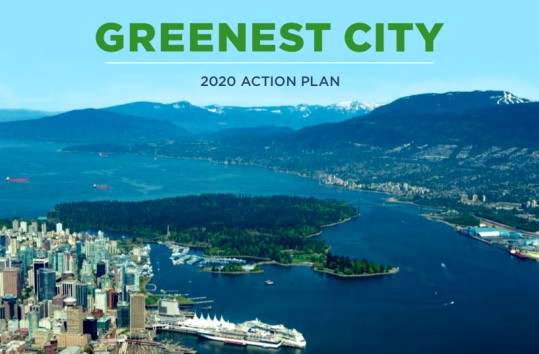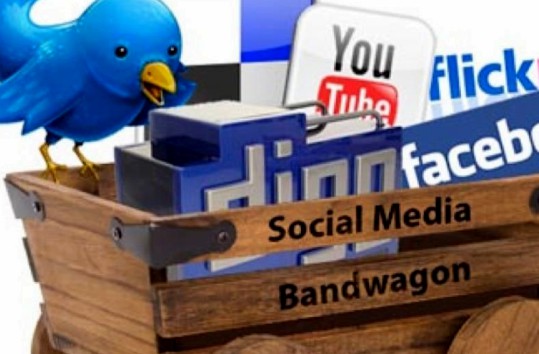Our Latest Blogs
Our Solutions News Blog was envisioned to gather and share information from the very best to help you and your business to become more effective.
Our Solutions News Blog was envisioned to gather and share information from the very best to help you and your business to become more effective.

All it takes is one look around the office or the coffee shop and you’ll see face after face buried in their smartphone or tablet.
Mobile device usage is sky-rocketing. But how many people actually own smartphones? What percentage of email is opened on mobile?
Here are 3 mobile stats that you need:
1.) 133.7 million people in the U.S. currently own a smartphone.
According to comScore’s latest report on the U.S. smartphone market, 133.7 million people owned smartphones as of February 2013. Not only is that number huge, but it’s growing. That number is up 8 percent since November 2012 alone, and it now represents 57 percent of the entire mobile phone market.
A few years ago, it was rare to find someone with a phone that could access email: now it’s the norm.
2.) 43 percent of email is opened on a mobile device.
Not only do many people now own smartphones, but many of are using these devices to check their email. In March 2013, 43 percent of all email was opened on a mobile device, according to Litmus. But that number alone doesn’t tell the whole story. For some comparison, mobile opens were at just 10 percent in 2011 — that’s an incredible 330 percent change. And while mobile opens are skyrocketing, desktop opens are going in the exact opposite direction — down 44 percent over the same time period.
3.) 58 percent of marketers say that mobile will affect their email marketing in the next 12 months.
What’s the top item that will affect email over the next year according to marketers in surveyed in MarketingSherpa’s 2013 Email Marketing Benchmark report? ... Mobile.
58 percent of marketers indicated that smartphones and tablets will have the greatest impact on email over the next year, even ahead of social media. How will it affect their emails? Instead of designing emails for large screens, marketers will need to design emails for fingers and thumbs.
What does this mean for you?
All of these stats make it very clear that email is no longer limited to desktops or laptops. This means that you need to create emails that look great no matter where they will be read — on a desktop, a laptop, a tablet or a smartphone. In the email marketing world, we call these mobile-friendly emails.
Sound complicated?
It’s not. It’s actually a lot easier than you might think and you don’t even need any fancy tech skills. Here are 5 Simple Tips for Mobile-Friendly Emails.
Source: Constant Contact - Fresh Insights

Famed author Mark Twain once said, “Many a small thing has been made large by the right kind of advertising.”
But advertising can be expensive, and in a tight economy, many small businesses cut their marketing budgets first because of cash flow concerns. However, when times are tough, it’s even more important to keep your business brand front and center.
During an economic downturn, clients, customers, and consumers have less money to spend. This means that when they’re ready to buy, you want your brand to be at the top of their list. Social media is undoubtedly one of the most effective and affordable ways to engage your customers and keep your brand top-of-mind, but it’s not the only way. Here are ten tried and true marketing strategies that can help you market your business on a shoestring budget.
1. Craft an elevator pitch
You should be marketing all the time — wherever you are. Therefore, you need a compelling elevator pitch. Research shows the average attention span of an adult is about 6 to 8 seconds. That’s all the time you have to grab someone’s attention. If you successfully engage them, then you only have a little over a minute to really sell them on your product or service. Invest the time to craft a killer elevator pitch. The return on your investment will pay huge dividends in terms of creating business opportunities.
2. Leverage your community
You don’t have to think big when it comes to your marketing efforts. Think locally. What’s going on in your community? Sponsor a Little League team or a 5k charity walk/run. Print bookmarks and leave them at the local library. Get to know your ideal customer and think about how and where they spend their time. Then search for opportunities to get in front of your customer with your marketing message.
3. Collaborate
Put together a group of synergistic, non-competitive businesses in your area and agree to cross-promote. You can use coupons, fliers, reciprocal website links, bundled promotions or social media platforms.(Okay, I had to add a little bit of social media to the mix.) By collaborating with each other, you can expand your customer base because you’ll be reaching new people.
4. Network
I’m a huge fan of networking. I don’t think there is any better way to build a business than to get out there, shake some hands, and get to know people. Networking requires a time commitment and it doesn’t provide instant gratification, but a strong network is one of the greatest assets any business person can have.
5. Give a speech
A lot of people hate public speaking. However, there are many organizations looking for qualified, subject-matter experts who can present to their groups. Take a deep breath and volunteer. You don’t have to be a pro as long as the information you share is helpful to the audience. And the upside — the more you do it the easier it gets. Plus, it positions you as a credible authority in your field.
6. Create buzz
I started my corporate career in the field of public relations and the business has changed significantly because of technology. Today, a small business owner can accomplish a lot without hiring a professional firm. Subscribe to Help a Reporter Out www.helpareporter.com. You can respond to reporters’ queries that are looking for story ideas and resources. Some are small media opportunities, but others are major media outlets that use this service too.
7. Ask for referrals
Don’t be shy about asking for customer referrals. The majority of people say they are willing to provide a referral if asked, but very few take the initiative to do it on their own. Referrals make it easier to get in the door with new customers. If you aren’t asking for them, you are missing opportunities.
8. Build relationships
It is a lot less expensive to keep a customer than it is to get a new one. That’s why establishing strong relationships with your customer base is crucial. One of the ways you can do that is by launching an email campaign. Make your communications informative and helpful — something your customers will look forward to receiving. Social media campaigns are another way to keep the communication channel open (and there I go again.)
9. Offer coupons
Coupons are a good way for many businesses to attract new customers. Research shows that people will go out of their way to use a coupon, proving that this method is successful in expanding your customer base. Coupons can also generate return visits. For example, if you give a customer a coupon for a discount to use on future business, there’s a high probability they’ll be back.
10. Give it away
If someone has the opportunity to experience your product or service, chances are they will want to purchase more. Don’t be afraid to give someone a free trial or a sample. In today’s economy, people are more comfortable purchasing something they have been able to experience first.
These ten, inexpensive marketing strategies will help you engage customers, build relationships, and ultimately keep your brand top-of-mind. It’s not always about the money you have to spend on marketing, it’s about the time and effort you put into it and above all, the relevance it has for your customers.
Source: Constant Contact - Fresh Insights

British Columbia's pioneering carbon tax has been remarkably effective in reducing fuel use, with no apparent adverse impact on the province's economy. This conclusion comes from a new study by Sustainable Prosperity soon to be published in the upcoming issue of Canadian Public Policy.
The study's key findings suggest that since the carbon tax took effect (July 1, 2008), BC's fuel consumption has fallen by 17.4% per capita (and fell by 18.8% relative to the rest of Canada). These reductions occurred across all the fuel types covered by the tax, not just vehicle fuel.
In terms of economic impact, the study findings suggest BC's GDP kept pace with the rest of Canada's over that time, and the tax shift enabled BC to have Canada's lowest income tax rates (as of 2012).
Overall, concludes the study, the tax shift has benefited all taxpayers in that cuts to income and other taxes have exceeded carbon tax revenues by $500 million from 2008-12.
BC brought in North America's first carbon tax in July 2008 and imposed a price on the use of carbon-based fuels. The tax was a central component of BC's climate change strategy, which aims to reduce GHG emissions by 33 percent below 2007 levels by 2020.
The carbon tax was designed to be "revenue neutral", meaning that all revenues were to be used to reduce other taxes, mainly through cuts to income taxes (personal and corporate), as well as targeted tax relief for vulnerable households and communities - resulting in no overall increase in taxation.
The tax was initially set at $10 per tonne of carbon dioxide equivalent (CO2e), but the price was designed to rise by $5 per year thereafter until it reached $30 per tonne (roughly 7 cents per litre of gas) in 2012.
The Sustainable Prosperity study notes that when the carbon tax was brought in, there were predictions that it would harm BC's economy. Now, four years later, the data show that BC's economy has slightly outperformed the rest of the country over the period that the carbon tax has been in place.
So too, notes the study, the ultimate goal of BC's carbon tax is to reduce GHG emissions, by taxing the fossil fuels that cause them. Data on GHG emissions is available only through to 2011, so changes in fuel use (available through 2012) were used as the most current indicator of the tax's effects.
To get a fuller picture on GHG reductions the study compared GHG emissions in BC to emissions in the rest of Canada, counting only those sources that are subject to the BC carbon tax. From 2008 to 2011, BC's per capita GHG emissions associated with carbon taxed fuels declined by 10.0 percent, which the report's authors describe as a substantial reduction.
During this period, BC's reductions outpaced those in the rest of Canada by almost 9 percent. These GHG reductions were similar to those seen in fuel use during this same 2008-11 time period.
The study concludes that on the basis of available evidence, BC's carbon tax has been a highly effective policy to date, contributing both to a significant reduction in fossil fuel use per capita, with no evidence of overall adverse economic impacts. However, it cautions, further economic analysis is needed to reach more firm conclusions about these effects and their causality.
Research conducted by GLOBE Advisors confirms many of the Sustainable Prosperity conclusions, in particular that the carbon tax has helped various stakeholder groups from government, First Nations, educational institutions, and in the private sector to rethink the way they operate and to consider investing in clean technologies or to adopt more environmentally-friendly or lower carbon intensive practices.
The GLOBE Advisors research also suggests that while having a carbon tax provides positive benefits to the province, sustained leadership from both the public and private sector is required to meet the continuing challenge of further reducing the province's carbon footprint and growing BC's clean economy.
This is particularly so given that the carbon tax could be more than carbon neutral, revenue neutral, but could also be used to provide measurable, performance-based improvements for all BC residents and businesses.
The Sustainable Prosperity study notes that the BC experience to date is consistent with the results witnessed in seven European countries that brought in carbon tax shifts in the 1990s, notes the study. In those countries, the tax shifts caused estimated GHG emission reductions ranging from 2 to 7 percent (over a decade or more), according to a major empirical study funded by the EU.
It cautions that BC's carbon tax shift is only 4 years old, so it is too early to draw firm conclusions. But its GHG reductions are trending in the same direction as those seen in European countries with more than 15 years of date. However, it points out, BC's reductions to date appear to be even greater, which is consistent with the fact that its carbon tax rate is now higher and more comprehensive than in most European countries.
Stewart Elgie, Professor of law and economics at University of Ottawa, and the study's lead author, said "BC's experience shows that it is possible to have both a healthier environment and a strong economy -- by taxing pollution and lowering income taxes."
Canada's premiers are meeting from July 24-26 to discuss a proposed Canadian Energy Strategy which includes "a more integrated approach to climate change," Elgie added. "I hope that BC's success will inspire Canada's premiers to show leadership on a national approach to pricing carbon pollution."
His point is well taken. As reported recently in the Globe and Mail, studies undertaken by Environics Research and more recently the Environics Institute shows that a majority (59 per cent) of Canadians outside of B.C. would support the introduction of a B.C. style carbon tax in their own province, a proportion that has been slowly building over the past four years.
Majority support for such a tax was expressed in all provinces except Alberta (at 43 per cent), and is most widespread in Quebec (67 per cent), followed by Manitoba (59 per cent), Saskatchewan (58 per cent), Ontario (58 per cent) and Atlantic Canada (54 per cent).
The Sustainable Prosperity study is available for download Here »
Source: Globe-Net

June 2013 -- With content marketing on the rise, the CMO Council conducted a study of B2B content seekers’ information gathering attitudes, such as what they are seeking from B2B content and the characteristics most valued.
The study found B2B buyers are “turned off by self-serving, irrelevant, over-hyped and overly technical content. They’re migrating to peer-based communities and new sources of trusted, relevant and credible content and conversation.”
Findings:
Characteristics Most Valued in B2B Content:
Characteristics most disliked in B2B content:
B2B content most valued and trusted:
B2B content sources that are most valuable in shaping purchase decisions:
Additional findings:
About: The data is based on a recent survey of more than 400 B2B content seekers around the world, conducted by the CMO Council’s Content ROI Center and distributed by NetLine Corporation’s global content syndication network. Some 41 percent of respondents came from companies with more than $100 million in revenues, and half held titles of director and above. Two-thirds said they had influence on key purchasing decisions or final purchase-making authority.
Source: CMO Council, Print in the Mix

One key part of being a great inbound marketer is understanding how -- and why -- other people think and act the way they do. Think about it for a second. How can you create compelling content if you don’t know why it would be compelling to your audience in the first place? How can you personalize content to reach the right people if you don’t know what type of content they would like, and why they would like it?
Before you start jumping into all the tactical nitty gritty of marketing, it’s really helpful to understand how people operate … which is essentially what the entire field of psychology attempts to explain. Understanding some key principles in psychology can take your content from good to amazing, all because the right audience is reading and identifying with it. Bonus: if you understand these principles and weave them into your marketing, you’ll also convert more visitors into leads, and leads into customers.
Many of these psychological concepts can be used across many aspects of your marketing, but we’re just going to give one example for each. They also aren’t universal; we all know people who are outliers, do we not? With that in mind, let’s get started!
9 Important Psychology Concepts You Can Use in Your Marketing
1) Reciprocity
Introduced in Dr. Robert Cialdini’s book, Influence: The Psychology of Persuasion, the concept of “reciprocity” is simple -- if someone does something for you, you naturally will want to do something for them. No, this isn’t bribing. If you can act in a sincere and giving way, the other person will naturally want to help you.
When You Could Use This in Marketing
Give away something -- for free -- to help build community or customer loyalty. You don’t have be rolling in dough to give something away; it can be anything from a branded sweatshirt, to an exclusive ebook, to a free desktop background, to your expertise on a difficult subject matter. Even something as simple as a hand-written note can go a long way in establishing reciprocity. By delighting your audience with these small gifts, you’ll be one step closer to establishing a true, solid relationship with your visitors, leads, and customers.
2) Commitments
Another principle developed by Cialdini, “commitments” is another way of saying that people don’t like breaking their promises. If someone commits to something -- whether it is meeting for lunch or signing up for your product, they feel like they’ve made an obligation to you. Once they make that commitment, people will be much less likely to bail.
When You Could Use This in Marketing
This is a great way to fight customer churn. Though you should never stop trying to delight your customers (per principle #1), it’s important to keep in mind that the longer the commitment they make to you, the harder it could be for them to churn. Think about your pricing structure. Can you lower prices but have new customers sign up for 12 months instead of one? Then, once you’ve gotten your customers’ commitment, fuel it by offering great products and customer service -- and maybe even customer-specific content.
3) Authority
Most people naturally obey authority figures, according to another principle in Cialdini’s book. When we view someone as having authority, we’ll be much more likely to trust his or her opinions and suggestions, simply because we believe the person is credible.
When You Could Use This in Marketing
Amp up your authority in your content by prominently featuring authors’ information alongside their blog posts, ebooks, whitepapers, or videos. This way, your audience can see just how smart and amazing your inbound marketers are, which can be a step in the right direction if you’re trying to establish thought leadership as a brand.
4) Social Proof
We’ve talked about social proof a few times on the blog already, but basically, it boils down to a situation in which you adopt the beliefs or actions of a group of people you like or trust. In other words, it’s the “me too” effect. Think of this like an awkward middle school dance -- few people want to be the first one on the dance floor, but once a few people are there, everyone else wants to join in. (Keep in mind, this desire to conform doesn’t go away when you get older and less bashful about your dance moves.)
When You Could Use This in Marketing
One easy way to make the most of social proof is on your blog -- if you're not already, use social sharing and follow buttons that display the number of followers your accounts have or the number of shares a piece of content has. If those numbers are front and center and you already have a few people sharing your post, people who stumble on your post later will be much more likely to share.
5) Liking
Another psychological theory by Cialdini, “liking” means that if you feel positively toward another person or company, you’ll be much more likely to interact with them or buy from them. It may not matter how smart the other person is or how profitable the company is -- if you think they’re cool, you’ll want to be seen with them more often.
When You Could Use This in Marketing
Liking is crucial to developing your company’s brand. Keep in mind that being “likeable” doesn’t have to mean being “nice.” Your brand could be raunchy and kind of offensive … but if your audience likes it, you can still take advantage of “liking.” You just want people to feel positively affiliated with your brand. So however you make that happen, it's worth a try.
6) Scarcity
Ever gone to buy airline tickets and seen a tagline that says “only 3 seats left at this price!” Yup, that’s scarcity (again, another Cialdini concept). This psychology principle goes back to the simple formula of supply and demand: the more rare the opportunity, content, or product is, the more valuable it is. Note: If you want to properly use this principle, you need to be careful how you word it. If you approach the scarcity concept as if there used to be a ton of a product or service, but due to popular demand there’s a few left, people will be very receptive. On the other hand, if you approach it from the angle that there are only a few products total, so get it now, the principle won’t be as effective. Check out this post from Nir and Far for a deeper explanation on why that distinction is important.
When You Could Use This in Marketing
This could be a great tactic to use when planning events. If you’re looking to increase ticket sales, it might be worth sending a personalized email to people who haven’t registered yet to remind them that there are only X number of tickets left since so many people have registered.
7) Recency Illusion
Ever heard about a product and then start seeing it everywhere you look? While that may be part of some clever ad retargeting online, it most likely is because of the “recency illusion.” It starts happening after you encounter something for the first time, and then you start noticing it everywhere you look.
When You Could Use This in Marketing
This is important to keep in mind when you’re designing marketing campaigns -- you should be aiming to develop robust, integrated campaigns, not just a one-and-done piece of content. By not pigeon-holing your inbound marketing to one type of content on one platform, you not only expose your content to new audiences, but more importantly, keep reinforcing your message with people who have encountered previous marketing pieces.
8) Verbatim Effect
According to this psychological concept, people are more likely to remember a fuzzy, general idea of your content -- not the longer, more detailed piece you originally created. For example, people will most likely remember that your presentation was generally about blogging for business -- not necessarily the details about writing and editing blog content.
When You Could Use This in Marketing
In our world today, people are headline-hungry. Given the “verbatim effect,” you should try to pack as much relevant and descriptive information into your headline as you can. Besides the fact that your headline will be fighting for attention all on its own on social media (as opposed to being accompanied by the full article text), your headline is only a few words that sum up your entire post. So use it wisely -- it may be all that your readers remember. If you need some help writing compelling headline copy, check out this post on our blog.
9) Clustering
People have a limited amount of space in their short-term memory. In fact, most people can only remember seven pieces of information (plus or minus two pieces in any given situation) at a time. To cope, most people tend to cluster similar pieces of information together. For example, if you had a whole grocery list of random items, most people would tend to mentally group items into certain categories (dairy, grain, meat, etc.) to be able to better remember what exactly was on the list.
When You Could Use This in Marketing
Do the legwork for your audience: group similar topics in your writing together -- either under numbered bullet points or with different header sizes. Besides being much easier to scan, your writing will be much easier to remember and recall down the road -- especially if you’re creating long lists of content.
Source: Hubspot.com

Vancouver City Council received an update today on the Greenest City Action Plan (GCAP), and heard that the City has achieved a four per cent reduction in greenhouse gas emissions since 2007, while Vancouver’s economy and population both grew significantly.
“The 2013 update on the Greenest City Action Plan shows we’re making good progress, but there is much more to do,” said Mayor Gregor Robertson. “The costly impacts of climate change require us to continue working hard and strengthening our partnerships with other levels of government, business and labour communities, and our neighbourhoods and residents.
“Cities around the world are grappling with the effects of climate change, and in Vancouver we’re proving that you can have a strong, healthy economy while reducing carbon pollution. The climate crisis is a daunting global challenge and Vancouver’s leadership shows other cities what can be achieved, so it’s crucial that we keep raising the bar.”
The 2013 GCAP report to Council included an update on the 10 goals outlined in the plan, which collectively strengthen Vancouver’s natural environment, create new economic opportunities, and further establish Vancouver’s reputation as a city that balances economic growth with environmental leadership.
The accomplishments outlined in the report include:
In addition to these accomplishments, Council heard about the significant work ahead that is necessary to achieve the ambitious targets in the Greenest City Action Plan. From local food production and security to green transportation, access to nature and a lighter footprint, the 10 GCAP goals call for local and international leadership. They set out a clear path towards a bright green future for our community and our planet.
To learn more about the plan and read the 2013 GCAP Implementation Update, or to see an interactive map of green projects in Vancouver, please visit Vancouver.ca/greenestcity »
Source: Vanvantage.com

Golder Associates Ltd. and the Union of Nova Scotia Municipalities' (UNSM's) Municipal Sustainability Office are launching a new guidebook - From Great Ideas to Great Communities - to help municipalities implement their Integrated Community Sustainability Plans (ICSPs).
This guide will help municipalities to translate their long-term goals and ideas into meaningful action on the ground.
The guide demonstrates how municipalities can build a culture of sustainability and integrate sustainability goals and principles into their daily operations and decision-making. Designed to be practical and easy to use, it includes a seven-part framework for action, step-by-step guidance, and priority strategies and actions for moving forward with the implementation process.
"We want each and every one of our municipalities to be successful in reaching their sustainability goals, and we anticipate that this guide will serve as a roadmap to help them along the journey," declared Councillor Frank Fawson, Municipality of the District of Lunenburg and Chair of UNSM's Sustainable Practices Committee.
The guide was prepared by Chris Lindberg and his team at Golder Associates Ltd. with support from The Natural Step Canada. It draws on examples and resources from various municipalities in Nova Scotia and across Canada that have had success with implementing their ICSPs.
"Nova Scotia has demonstrated real leadership in working with its municipalities on sustainability planning," says Senior Sustainability Specialist at Golder Associates and lead-author Chris Lindberg.
"We're very excited to launch this guide and help accelerate the implementation process. While the guide focuses on Nova Scotia, the framework, process and practices are relevant for municipalities all across Canada. We're looking forward to working with municipalities to make sustainability happen in their communities."
The guide and a wide variety of supporting resources are also available for download here »
Source: Globe-Net

Mission statements. They sound inherently business babbly, don't they? But even if you think they're a little ... silly ... they're really important guideposts for making decisions, staying inspired, and setting a bigger picture that gives your day-to-day work purpose.
Problem is, because the idea of a mission statement is so vague and broad, a lot of companies have trouble nailing one down. I did some research on companies with excellent mission statements, and pulled out the characteristics they all have in common. This post will show you how to write a great mission statement, told through the lens of some of the best ones out there.
Common Mistakes People Make When Writing Mission Statements
1) It's too long. (This will, ironically, be the longest section of the post.)
In one of my first "real world" jobs, my boss -- the CEO -- asked me to write a mission statement for the company. I knew they were supposed to be pretty short, so I wrote a couple paragraphs.
Wrong. Thank you for playing, Take this toaster as a lovely parting gift.
Just kidding, he didn't fire me, but we were both equally as clueless about how to write a great mission statement. The first thing to know is that they should be really short -- as in, like, a sentence. Maybe two. Check out Southwest Airlines' mission statement, for example:
"The mission of Southwest Airlines is dedication to the highest quality of Customer Service delivered with a sense of warmth, friendliness, individual pride, and Company Spirit."
To give you an idea, I probably would have written that something like:
"Southwest Airlines' mission is all about customer service. Not just any kind of customer service -- but high-quality customer service -- whether at ticketing, on the plane, in the terminal, even on our website. This should come through in a few places. First, warmth. Warmth means ... "
And on, and on, and on ... and on ...
Make it short and sweet. If you can't say it in a sentence or two, you haven't really nailed the mission statement.
2) You're thinking too small.
Think beyond the tactical. Your mission isn't to create widgets. That's what you do -- but it's not why you do it. Take a cue from Microsoft, for example. Its most recent mission statement is:
"To enable people and businesses throughout the world to realize their full potential."
I consider this a huge improvement from its previous mission statement:
"A computer on every desk and in every home, running Microsoft software."
Why is it better? The old one wasn't bad, but the new one addresses something bigger than just selling a product. The new mission statement tells you who they want to reach -- people and businesses -- and what they want to help them do through Microsoft's products. It gives Microsoft a reason to exist as a business, beyond just making money.
3) It's not specific.
There's a tendency to work in generalizations when writing a mission statement, because you're trying to encompass ... well, a mission. And missions are big. (Remember, we just talked about not thinking too small.) But if you get too specific, you'll back yourself into a corner.
This isn't the right mindset. You can't be everything to everyone -- otherwise, what's your differentiator? What are you adding to the universe?
Zappos does a great job of communicating a larger mission, without compromising specificity. Their mission statement reads:
"To provide the best customer service possible."
They're not trying to loop in price, quality, changing the world, having the best corporate culture ... they want to provide the best customer service possible. That might include all of the aforementioned when it comes down to tactics, but it doesn't need to be in the mission statement. This is the perfect balance between thinking big, but still being specific.
4) The language is full of jargon.
This is where the business babble starts to creep in. (And often, the business babble creeps in because you're not being specific enough.) We all know what business babble is, so let's just look at a jargon-free mission statement to set the precedent for what we should all be striving for. Google's is an excellent example:
"Google's mission is to organize the world's information and make it universally accessible and useful."
They could have said that like this:
"Google's mission is to utilize the digital information inputs of various sources and outlets and dispense it in a structure optimized for user-understanding."
But they didn't. Because that's ridiculous. (And it's pretty much the opposite of making information "accessible and useful.")
5) It's not something people want to "get behind."
Your mission should resonate with people, particularly you and your employees. It should address a real problem -- or something people care about, at least. Think about why you wanted to get into your business in the first place ... you were probably inspired by something, right? Whatever motivated you then (unless it was for the money, in which case ignore this advice) might be what you want to tap into when crafting your mission statement.
Inspiring mission statements aren't just for nonprofit organizations, either. I happen to think Google's mission statement is one of the most inspiring I've ever heard. Or take a look at Coca-Cola -- how can a beverage company have an inspiring mission statement? Its mission statement is:
"To refresh the world; to inspire moments of optimism and happiness; to create value and make a difference."
That last part is a little vague and verging on business babble (what does "create value" really mean?), but I love that middle part. Your mission statement should be a bit lofty. That's okay. Aspiration is good -- it inspires people to be creative and work hard.
Questions to Ask That'll Help You Write Your Mission Statement
If you're totally stuck on your mission statement, ask yourself the following questions to get the flow of ideas going. Think of it like getting past writer's block ... but, you know, for a mission statement.
1) What do we do?
2) Why did I go into business in the first place?
Or, if you're not a founder of the business ...
3) Why did I want to work at this company/in this industry?
4) What do I want this company's legacy to be?
5) What doesn't matter to this company's legacy?
6) How do I want to help people?
7) What value does our company bring that's unique from other companies?
Remember, your mission statement isn't set in stone. It's actually wise to revisit your mission statement once in a while to see if it still aligns with your company's goals. Some companies, for instance, choose to write mission statements that help them solve a short-term problem their company is facing -- these can be updated later to reflect a larger mission once your short-term issues are addressed.
However you approach your mission statement, just check back every couple years to see if it still aligns with the space you play in, and the world you live in. If your company is around for a long time, it will inevitably change -- your mission statement might have to change along with it.
FWIW, HubSpot's mission statement reads: Our mission is to make the world inbound. We want to transform how organizations do marketing.
And at Dominion Blue our mission statement reads: We will give our customers help in achieving their needs in ways that exceed their expectations. Within the company, we will give each other help in achieving customers’ needs in ways that exceed everybody’s expectations.
What's your company's mission statement?
Source: HubSpot

As a savvy inbound marketer, you already know that social media is a must-have in your marketing strategy. You’ve spent time looking at what channels work best for your company, creating the best content you can for those outlets, and aligning the social media goals to the business' bottom line. You live and breathe social media every day on the job.
But that's not true for everyone else in your organization. Not everyone is sold on the importance of social media -- never mind manage their own presence. What about that VP down the hall with tons of killer industry knowledge or that executive you know who spends hours talking to customers? These executives may not be active in social media just yet, but they should be.
This is where you come in. If you think there are executives in your company who could add credibility to what you’re already doing, it’s time to get them on board.
Why Should Your C-Suite Be in Social Media?
Often, executives may feel like there's not much for them to do in social media. They hired a social media manager to watch over the company's presence, so why would they need to be in social media as well? Though some executives at your company may have already made up their minds about their social media participation (or lack thereof), it's incredibly important to have them in social media.
Having a presence in social media gives executives the opportunity to stay relevant with industry trends, engage with your prospects and customers, and show that they stand by and believe in your brand. By not listening and participating in social media, executives are missing out on numerous opportunities to improve your business. And ultimately, growing your business is every executive's objective.
How to Get Your Executive Team in Social Media
Getting executives in social media isn't as simple as signing up for a Twitter handle and asking them to tweet. Instead, you've got to be strategic if you want to get on board. By following these five steps, you can develop a socially savvy executive team.
1) Pick the right executives for the job.
Not every executive is ready to dive headfirst into social media -- and that's okay. Instead of proclaiming that all executives must start tweeting immediately, start off with a select few that you know would be successful in social media if you were to show them the ropes. Think about who would be a good advocate for your brand and have the potential to be a thought leader. Also, see how active they are in social media already. You may want to check out LinkedIn first to see who’s active already, since executives prefer LinkedIn to any other social site. This will give you a good indication of who to approach about helping build your brand in social media.
After you understand who’s been up to what, it’s time to think about your approach. Asking an executive who isn’t that familiar with Twitter or Facebook to jump right in isn’t going to work. First, they need to get an understanding of what's happening on social media for your brand.
2) Show them why they should care.
While 90% of business executives say that social media tools are important for brand awareness and company reputation, that doesn’t mean they're personally doing anything about it. This might be because they think they don’t have anything to add, they don’t know what to say, or they aren’t really in the loop with the happenings in social media at your company.
Here's your golden opportunity to show off what your company is doing and form a plan for what the executives could be doing, too. Invite the executives you identified in step one to a meeting to give them an overview of how your company uses social media and how it’s affecting the rest of the business.
When you meet, bring numbers that those in the room care about. If your goal is to get a seasoned VP of Sales involved in social media, you’ll probably want to show them how many leads social media generates for your company a month. For a VP of Sales, leads = perked ears. Figure out what gets each executive excited about being in social media, and be sure to highlight it for them.
3) Let the benefits get personal.
This is probably where to expect some pushback. I can hear it now: “But why do I have to be involved? Didn't we hire a social media manager to handle this?"
You want these questions. You’re ready for these questions. Now that you’ve shown the executives what the company is doing, you can show them how their social presence fits into the overall social media team effort.
You can prepare for these questions by giving them concrete reasons for participation: Based on a recent social media survey by BRANDfog, executive social media engagement creates brand transparency (score!). It makes a brand seem more honest and trustworthy (win!). And, it makes executives better communicators overall (bonus!). Make sure they understand exactly what they will get out of this new experience -- you'll be much more likely to get them on board.
4) Set them up for success.
So they're up for the challenge -- now it’s time for them to get down to business. If they’re hesitant to jump in headfirst, offer to get them all set up and give them a demo of what to do. At this point, you’ll know how much handholding is necessary for each executive -- use your judgment. There’s a balance between relying solely on executives' intuition and independence and losing them in the noisy crowd.
If they need help getting started, give them a couple of ideas of what to do. Maybe you come to the table with some sample content they could share or people to follow. Suggest some goals for them to aim for each week (X tweets, X Facebook posts, etc.). If you're a HubSpot customer, maybe set up a dedicated email alert in your Social Inbox. However you decide to start, make sure the task is fairly easy. The beginning is always the hardest and you don't want your executive team to be discouraged right off the bat.
5) Maintain momentum by checking in periodically.
At this stage, you’ve done some serious work getting your executives up and running. You’ve explained your company’s social strategy, the benefits of executive involvement, and the steps to get involved on those channels. You’ve given them all the tools they need to become socially savvy.
To keep up momentum, schedule regular check-ups with the executives. Show them some results from their social media efforts and identify what’s working and what’s not. Real-life examples and metrics are a must here, especially when you have data available to track conversions of current leads and customers through social media.
It may be a slow start, but every step is a step forward. Make future plans to keep the conversation going. One possible idea is to schedule a monthly get-together to talk about social media news and how they could integrate that into what they’re doing. Managing a social media presence isn't a one-and-done effort -- it needs constant evaluation and planning to maintain and grow.
Eventually, you’ll find the rhythm that works best for your company. Creating a socially savvy executive team doesn’t happen overnight. But with the right approach, you may start to change the way your executive team thinks about social media. And who knows -- maybe one day, your CEO will want to take over Twitter for the day.
Source: HubSpot

Natural Resources Canada (NRCan) is undertaking an R-2000 Net Zero Energy pilot (the Pilot) to recognize builders and homes reaching net zero energy performance in Canada, and to pilot the next generation of NRCan's 2014 R-2000 Standard and EnerGuide Rating System in net zero energy applications.
Drawing on NRCan's systems and infrastructure - including its certified energy advisors certification process and quality assurance protocols - will provide recognized metrics, objectivity, standardization and credibility to this emerging space.
In addition to doing a field trial of the next generation standards, NRCan will use the pilot to examine the best means for seamlessly incorporating net zero energy offerings into its suite of standards on a permanent basis.
NRCan will also use this opportunity to explore possibilities surrounding net zero energy ready homes.
Design Seminars and Request for Proposals
The Pilot will be implemented in several phases over the next two years.
The next step in the Pilot process is a design seminar on May 15, 2013that will present NRCan research that demonstrates that an R-2000 home can achieve net zero energy home performance using commodity technologies and methods, as well as provide a cost ball-park, guidelines and starting point for those interested. The design seminar will take place via webinar.
A request for proposals (RFP) for participation in the Pilot will be issued following the design seminar in May. It will be open to any builders from across Canada that are interested in piloting the standard to build and certify their houses to this ultimate level of energy performance.
The RFP is designed to evaluate the merit of the applications. It is expected that a maximum of 10 applicants will move through the RFP stage. These applicants will then need to provide detailed house designs and modelling results to complete the design stage.
Where necessary, NRCan will work with participants to develop modelling workarounds should the HOT2000 simulation software not contain a model for proposed products or equipment.
The RFP will close on mid-late June, followed by an RFP evaluation. The Design stage will last from early August to the end of October. Finally, construction and labeling will take place from November 2013 to November 2014.
An ERS "Efficient Living Assessment" will be completed on each house to obtain as-operated energy performance after occupants have moved in. Lastly, post-program analysis will be undertaken to allow NRCan to formalize within its suite of standards "R-2000 Net Zero Energy" recognition, and potentially "R-2000 Net Zero Energy Ready". It will also provide valuable lessons-learned to interested builders for the future.
Background information about the Pilot
NRCan has committed to using a Standards Council of Canada based process to develop the next generation standards for R-2000, ENERGY STAR for New Homes and the EnerGuide Rating System (ERS) to ensure open and transparent processes and input from stakeholders.
Over 500 stakeholders have participated in these processes over the past three years. NRCan is now looking to test those standards with respect to net zero energy homes.
The R-2000 Standard will form the basis for the pilot. Houses labelled under the Pilot must meet the requirement of the draft2014 R-2000 Standardand obtain a rating of zero gigajoules using the new ERS scale.
The Pilot will also focus on off-the-shelf technology (i.e. engineered pre-packaged systems rated to an internationally-recognized performance standard) in order to advance the commoditization of net zero energy homes in Canada.
Why use R-2000 and ERS as the basis?
R-2000 is an established national standard with the training, certification, house-testing, inspections and overall quality assurance that are an essential part to ensuring the integrity of net zero energy housing/
The minimum envelope requirements of the draft2014 R-2000Standardwill be applied in order to ensure the building envelope and other long-term elements are well-addressed before renewable energy technologies are used to offset conventional energy use.
The R-2000 builder community has long been the group of experts advancing energy innovation in home building, and this Pilot, along with the next generation standards, will help to reinvigorate and bring together again this community of leaders, coalescing the R-2000 and Net Zero communities.
Using the next generation ERS rating scale offers an ideal opportunity for participants to use and feed into the next generation ERS process to ensure it addresses any outstanding issues that relate to net zero energy homes.
Benefits of participating
Builders will have a first to market claim on this new Government of Canada certified level of recognition from NRCan. They will also play a key role in setting the requirements for labelling Net Zero Energy homes in Canada. NRCan will offer technical support and promotion as an in-kind contribution to each participant.
Pilot participants will also benefit from collaborating with leading experts to gain insight into design of homes using available, high performance building envelope products, technologies, and techniques that can be used to achieve net zero energy performance.
Participants who are successful through the request for proposals process will also have access to modeling support from NRCan simulation experts for technologies that cannot be modelled using HOT2000.
This pilot will give participants an opportunity to demonstrate industry leadership with first-to-market, NRCan-recognized net zero energy homes built and certified under the quality assurance of R-2000. NRCan will also work with the pilot proponents to raise awareness about the pilot and its participants.
Source: Globe-Net